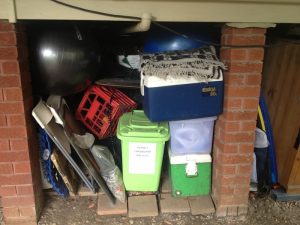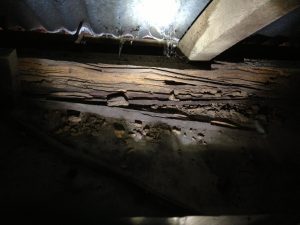Pest Inspections – Should you buy a home with termite damage?

When buying a property, we all know we should carry out a building and pest inspection before completing the purchase. But what if the inspection finds a problem – some building defect or the presence of termites (white ants)? Many buyers panic when an issue is uncovered and pull out of the sale, but it can create opportunities. Inspections provide knowledge and knowledge is power – you can either pull out of the sale or use the inspection information to negotiate on price.
A building defect is often dealt with very logically. What is the defect? How much would it cost to fix? Will the seller drop the price accordingly? However, the presence of termites and/or termite damage often causes an irrational and emotional response by the potential buyer. Here’s some information that will help you decide whether you should buy a home with termite damage.
What information is provided in a pest inspection?
A pre-purchase timber pest inspection (as they are correctly called), inspects a property for timber pest activity, timber pest damage and any conditions in and around the property that may lead to timber pest problems. Timber pests include termites (white ants), borers and wood fungi (that cause wood rot/decay).
The important point to realise is that it is a visible inspection… inspectors are not allowed to move items in the home and they are certainly not allowed to cause any damage to investigate any suspicious areas. As such, in addition to any findings the inspector reports, they may also recommend the need for a further “invasive” inspection, either to move items to gain access to suspect areas or use appropriate equipment to probe walls and floors.
However, the seller needs to give permission for these further inspections. If they decline, this is a definite no to proceeding with the sale, as it is a good indication they are hiding something – it is not uncommon for sellers to block access to inspectors, to certain areas of the home, by moving boxes, equipment or furniture!

But if a thorough pest inspection has been carried out and the report lists active termites, termite damage or conditions conducive to termite attack, what should you do?
If there are active termites in the property it is important to understand the extent of the activity and level of damage. As any reduction in price needs to take into account the treatment of active termites and the repair of damaged areas.
With regard to controlling the active termites, it is best to ensure the termite treatment is carried out according to Australian Standards. Not surprisingly, sellers will often try and get the cheapest possible treatment. If you intend to buy the property it is important that the termites are eliminated and prevented from returning. This means a comprehensive treatment; the first stage is to eliminate termites from the building and the second stage is to put in place a treatment or termite monitoring system around the building to provide lasting protection. If the seller organises this treatment, you need to be clear on your expectations, and ensure you receive the treatment report and associated warranty.
When termite damage is listed in a report, whether “fresh” from active termites or “old” from a previous termite attack, it is important that you get a builder to assess the damage and provide a quote to make good, so that this can be used in negotiations.
It is important to also understand that it is very hard to tell how “old” the termite damage is. So apart from getting an assessment as to the level of damage, whether repairs are necessary and how much they would cost, it is an indication that the property is at risk of further termite attack.

The timber pest inspection report will also list conditions in and around the property that may make the building more susceptible to termite attack. Not all of these issues cost money to fix, but should certainly be dealt with if the property is to be purchased. However, leaks in showers and drainage issues in and around the property are two issues which may need to be considered as part of the price negotiation.
Stay calm, negotiate and you can save!
It does sound like there could be a lot of potential issues to consider when reading a pest inspection report, but taken one at a time and considering the costs involved to fix the problem, will allow you to decide whether you should proceed with the sale or whether you need to negotiate the price down.
It’s important to realise termite damage to property is very common – the risk of termite attack as high as 1 in 3 in some areas of Australia and CSIRO report that 1 in 5 new homes will experience a termite attack within the first five years. As such, many properties, especially older homes, are quite likely to show some signs of termite damage.
However, if you approach any adverse findings logically and get costings on the remedial actions, you may have the opportunity to snag a bargain, as the less informed buyers will be doing a runner!
If you need a pest inspection call AllPro Pest Control on 07 3446 5841


Leave a Reply
You must be logged in to post a comment.